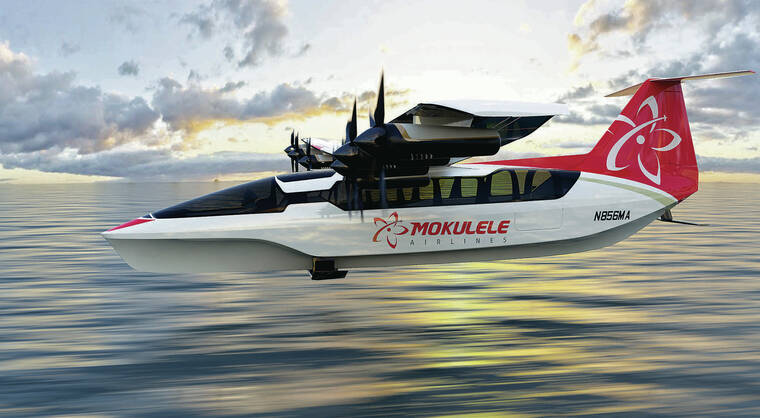An alternative way to travel around and between the Hawaiian islands has been an unfulfilled dream for years now — think SeaFlite, Superferry and The Boat, all falling to poor planning, economic realities and rough interisland channels.
Now comes a new prospect, one that raises our hopes again. Two companies, REGENT and Pacific Current, announced this week their intention to develop all-electric, zero-emission flying seagliders for transportation in Hawaii. The plane-boat hybrids would zip smoothly just above the ocean’s surface, taking passengers from harbor to harbor, bypassing airports and security lines.
Of course we hope the project succeeds. More interisland connections, especially among smaller population centers poorly served by large passenger jets, would help to keep our families and friends closer. And because the new propeller-driven seaplanes are expected to be cheaper to operate, we also hope that the cost of travel — now a prohibitive burden for many families — could be reduced.
Envisioned are a 12-seat model called the Viceroy, which could hit the market by 2025, and the 100-seat Monarch by 2028. The maximum distance they could fly is 180 miles — from Oahu, within reach of Maui or Kauai, say. Emerging battery technology could extend that range by up to 500 miles. They would go much faster than a ferry and without the seasickness-inducing chop of winter waves.
There’s some deja vu here. In 1929, Hawaiian Airlines launched its first amphibious planes from Oahu to Maui and Hawaii island: two eight-passenger Sikorsky S-38s. In a climate-changing world, these seagliders could be part of a new era in clean air transportation, with a nod to the past.
Still, there are a lot of ifs.
The seagliders are promising but unproven, both technically and commercially. They have to be built, tested and certified. As seagoing vessels, the seagliders must comply with the Jones Act and Coast Guard oversight. The state no doubt will need to play a role, particularly regarding harbor and dock access. And let’s not forget what scuttled the Superferry: a failure to conduct a proper environmental review.
Still, investors seem confident that the project can succeed. REGENT’s partner, Pacific Current, is a subsidiary of Hawaiian Electric Industries. Hawaiian Airlines and Mokulele Airlines are among those putting money down.
It would behoove state officials to take a welcoming approach as well, but with fiscal caution, especially after spending at least $34 million in public funds on equipment for the failed Superferry.
To soar where others have sunk, this ambitious project will need to succeed on its own.

